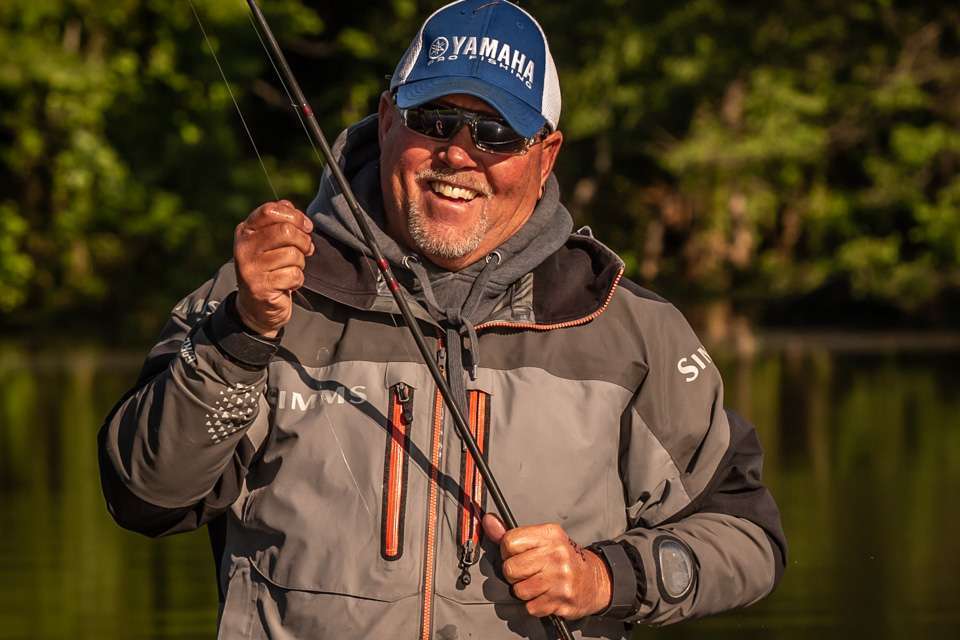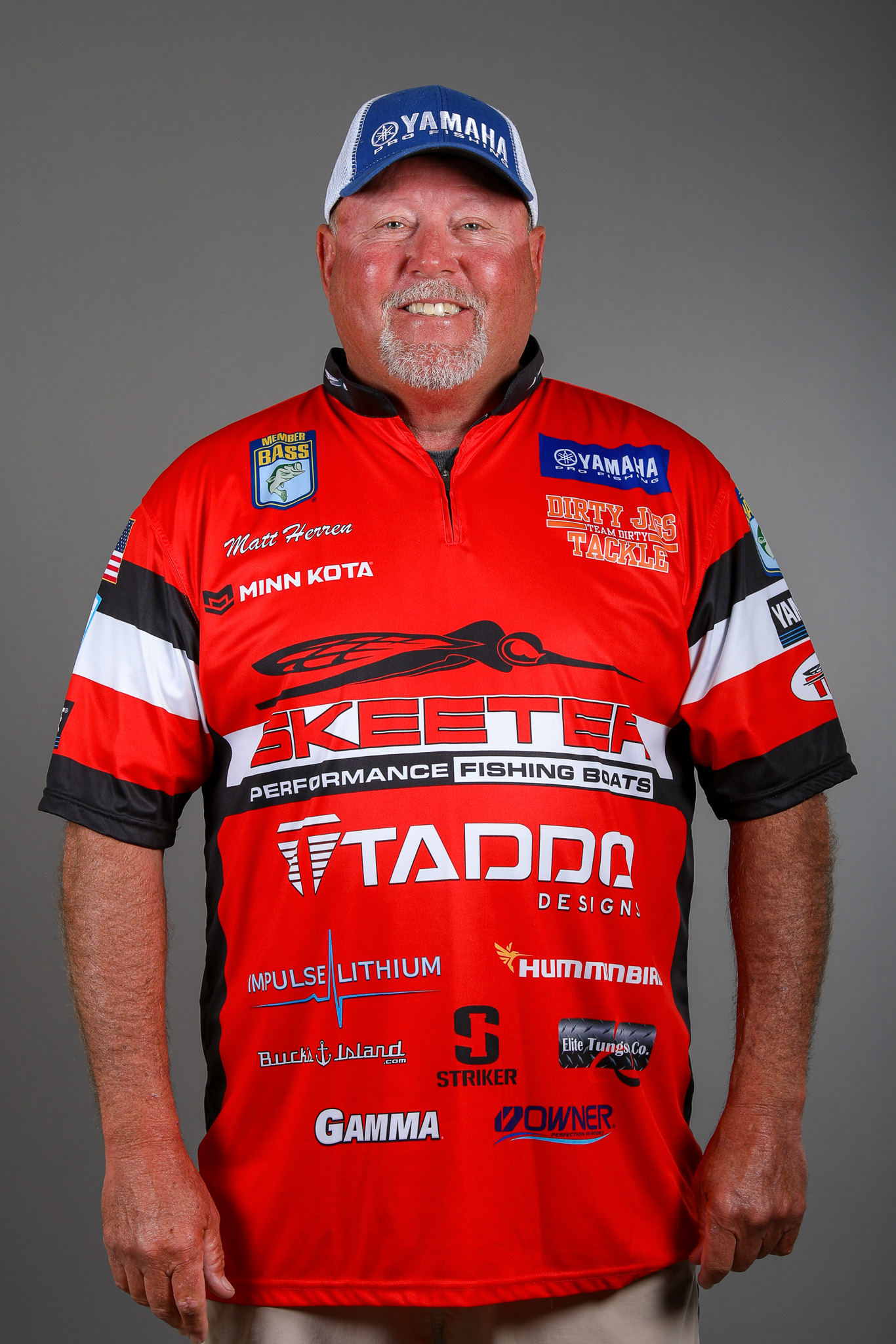
Hey there, everyone, sorry that it’s been a while since my last blog. There’s been a lot going on.
A couple of personal highlights since my last entry: I fished the B.A.S.S. Redfish Cup Championship in Texas for Skeeter and Yamaha, and then of course I had Thanksgiving with the family. I don’t know about you, but I ate way too much.
Now that I’m sitting down for an update, Candy and I are getting ready for Christmas, and I’m also setting up my Skeeter/Yamaha FXR20 for next year’s Bassmaster Elite Series. I’ve been busy working with Buck’s Island to set up my Humminbird Solix and Helix units, network them to my Ultrex trolling motor and get my Battle Born Batteries all rigged and ready to go. There are a couple items still in transit, but once they get here, I’ll be able to rig my Raptors and get the boat wrapped for the season.
While I’m waiting on my parts, I’ve been breaking in my Yamaha, and in the process, doing a little fishing. While I was taking a break from driving the boat during break-in, I thought I’d tell you about one of my favorite techniques.
This is actually one of my favorite times of the year because I get to fish one of my favorite lures – flat-sided balsa crankbaits. I know I make my living as a jig fisherman and a flipper, but I just love fishing flat-sided crankbaits in cold water. I call it “me time.”
I call it that because so many people are focused on hunting, and I can get out on the water by myself and fish what I want. About 90% of the fishing pressure is gone, and I can hit the best stuff without interruption.
I love flat sides this time of the year because they have a tight wiggle, which makes them really effective in cold water. In the South, the bait is still in shallow water for much of the fall and winter. The bass get around rocky areas to keep warm, and that’s where these baits really shine.
Flat-sided baits are all different. Not only will each style be different from manufacturer to manufacturer, but each individual bait will have a unique action because of wood density and subtle differences in the building process. There are some really good manufacturers out there, but some of my favorite baits come from PH Custom Lures, Black Label Balsa, Craig Powers and Lazer Lure.
I need to warn you though: Balsa lures can become an addiction. And the community that loves them is without a doubt a cult. Before you start buying them, there are great places to learn more online like the Wood Bait Nation on Facebook. Wood Bait Nation is a group where a lot of builders and collectors communicate, sell baits and talk fishing. It’s a great resource for getting started and learning more.
My main person to talk flat sides with is my Elite Series brother Bill Lowen. Bill and I share a passion for these baits, but to be fair, he is a much better angler with them than I am. I’ve never seen somebody get more out of them than Bill. I’ve learned a ton from him over the years, and it’s made me better with this type of lure.
There are different styles and shapes of balsa crankbaits. Flat sides aren’t like a big-bodied squarebill that let you crash through wood cover. They require more finesse in the presentation. The key to fishing them is to slow down. I crawl them around the rocks and gravel bars in a steady grind, not a fast stop-and-go retrieve. You really have to feel your way through the cover because they tend to be a little grabby in wood cover.
I tend to stay with a slower gear ratio reel — in the 5.6:1 to 6.3:1 range — and I try not to over-reel them. I fill the reels with 8- to 12-pound-test Gamma Edge Fluorcarbon line for that great feel and toughness around the cover.
Because we fish them slow this time of the year, as a tip, if you find yourself reeling too quickly, strip a quarter of the line off your reel. This change will make the bait move slower without adjusting the cadence of your reel handle.
Rod choice is important. I use a Kistler All Purpose Feel ‘n Reel composite rod because it has the feel, but the soft tip action helps the bait stay hooked in the fish’s mouth when I’m fighting. To help land more fish, I also change out the hooks on my baits to Hayabusa NRB trebles. They have a coating on them that helps points penetrate easier and that really helps me land more fish.
The best time to try to get comfortable with flat sides in colder water is the afternoon when the sun gets up and the water starts to warm. That’s when the fish will get up shallow in the water column and feel the warmth of the sun. It makes them more vulnerable.
Don’t get too crazy with color selection to start with; you’ll only need a few colors. Carry a couple of shad patterns, a couple of bream tones and a brown and a red crawdad color. Don’t get too many to start with until you begin to refine your approach. It will help avoid confusion.
Flat-sided crankbaits are a lot of fun, and they can be lethal to catch cold-water bass. Spend a little bit of time learning them, and you can have a bunch of fun in the cold winter months.
Before I step away, I want to wish everyone at B.A.S.S., our sponsors and partners, and most importantly the fans of our sport, a Merry Christmas and a Happy New Year. Thank you for being the best part of our sport.





